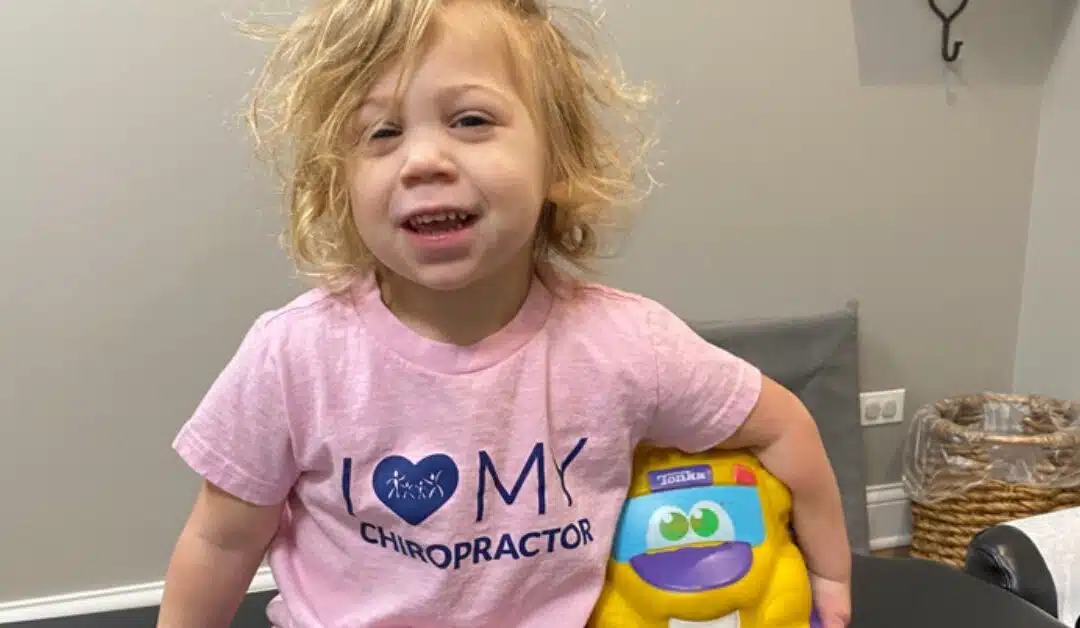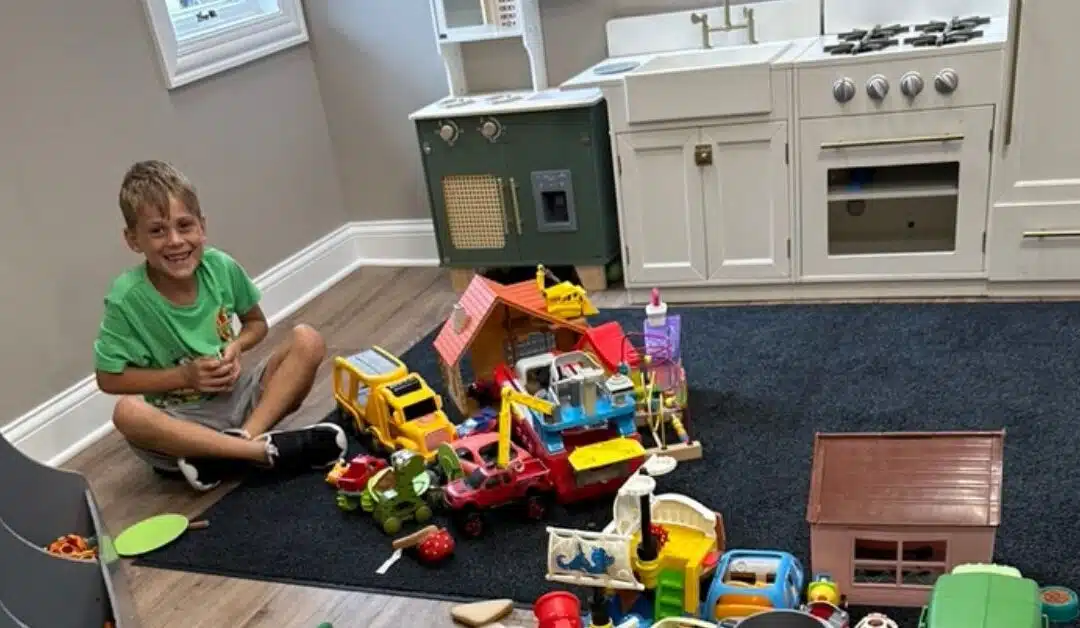I’ll never forget how incredible it was to watch Joseph become calmer and calmer with every adjustment. The tension in his shoulder and arms started to relax immediately after his first adjustment, and within a matter of days, his stimming was reduced significantly and almost gone.
From there, Joseph’s neurological healing absolutely took off! Instead of being full of tension, anxiety, and stimming, he now was smiling, joyful, and even wanting to work out!
Joseph came to our clinic in October of 2022 for a 2-Week Neuro Intensive Program, struggling daily with the neurological effects of autism, anxiety, constipation, gross motor challenges, and more.
It was amazing to watch how much progress he was able to make in just that 2-week time, and now back at home, he is continuing care with another neurologically-focused PX Doctor and continuing to absolutely soar and reach his full potential each and every day!
One of the very first things we wanted to help him get through was his autism stimming, the topic of this article.
What is Stimming?
Stimming is the use of repetitive, unusual movements or noises that seems to help children with autism regulate their emotions and sensory system when overwhelmed.
Stimming can come in various forms and may include things such as:
- Hand-flapping, finger-flicking, or continually squeezing the fists
- Unusual body movements like rocking back and forth
- Arching or rotating into various postures and positions
- Visual stimulation using the eyes to look sideways or watch an object spin
- Repetitive behavior such as opening and closing doors, turning on and off light switches or going back and forth to touch or hug a parent or loved one
- Chewing or biting objects
- Listening to the same song or watching the same show over and over
Many children with autism and other neurological challenges struggle with stimming, and the severity and style of their stimming have a lot to do with how severely stressed their nervous systems are and where particularly that stress and tension are located within their bodies.
It’s also important to note that stimming is not just a neurological challenge associated with autism. Many children without an autism diagnosis but who may struggle with things like sensory integration disorder, ADHD, anxiety, and other challenges will struggle with stimming when overwhelmed and anxious as well.
It often is not as apparent and expressive as those children with autism stimming, but a trained professional will know how to spot it and help kids and parents overcome their challenges. If you see your child stimming when in loud or new environments or social situations, please consider seeking a professional like those in our PX Docs Network to see if other neurosensory challenges may be at play.
Why Children with Autism Stim
Generally, children with autism stim try to use movement stimulation to help calm their brain and nervous system when their sensory or social system is overwhelmed.
Out of all the neurological challenges children face, those with autism have the highest severity of what’s known as sensory integrations disorder.
Put simply, with their nervous system already stuck in continual fight-or-flight overload, these children do not have much “room” or “slack” left in their sensory processing system for added noises, social situations, physical stimulation, or other anxiety-inducing stimuli.
Therefore children with autism will often use stimming to help decrease sensory overload, adapt to a new environment, reduce anxiety and calm themselves, or express frustration with a situation when they can’t communicate any other way.
Looking ahead, this is why for cases like Joseph mentioned above, we can use a decrease in their stimming to know that we’re helping them reduce their sensory load and better adapt to social situations, noisy environments, and just life overall.
The #1 key to the neurological health and development of a child’s nervous system is its ability to respond and adapt to its environment appropriately. Struggling to do so is the hallmark challenge with autism and stimming that must be addressed. Thankfully that is the absolute core focus of our work as PX Docs, and we can get some incredible improvements in neurological function and adaptability without the use of drugs and medications!
Types of Stimming Behavior
For children who get overwhelmed and anxious, common stimming behaviors may include:
- Biting fingernails
- Twirling hair
- Cracking knuckles, neck, or back
- Tapping or drumming fingers
- Clicking pens or pencils
- Chewing gum or clenching their jaw
And for children whose stimming behaviors are associated with autism, they may include:
- Rocking back and forth
- Flapping hands or flicking and snapping their fingers
- Bouncing, jumping, dancing around
- Pacing or walking back and forth on their tiptoes (toe-walking)
- Pulling hair or biting
- Clenching their jaw or fists
- Repeating words or phrases
- Playing the same song or show over and over
What Causes Stimming?
While not much information out there helps parents understand this key component, we feel it’s important to explain to parents that stimming is an adaptive and important behavior for children whose nervous systems are just entirely overwhelmed and stuck on sympathetic fight-or-flight overload.
When your child’s body is stuck in these perpetual tension patterns, known as subluxations, and then their sympathetic nervous system is further stimulated by loud noises, bright lights, lots of people, or new sights and smells, it gets even further wound up and tense, and therefore the movements and stimming actually help calm the brain by increasing what’s called proprioceptive input.
Proprioception is the stimulation or sensation of movement into the brain and central nervous system, and it’s known to be the most calming and regulating sensation we have.
Just think of how your brain and body feel after sitting at your desk for hours and hours, going from one stressful Zoom meeting or phone call to another. The more your stress and tension build-up, the more you know you need to get up, move, stretch, and create proprioceptive input yourself.
But children who struggle with stimming are dealing with higher levels of stress, tension, and subluxation already stuck within their nerves and muscles even while at rest, so they have less “slack in the rope” to handle new, stressful situations.
Stimming Management
Since a loud, bright, overwhelming environment is most often the trigger for a child to increase their stimming, many parents and providers seek first to quiet and calm the child’s sensory environment. While we all enjoy a more peaceful, quiet environment, being in public places with lots of people, noise, and distractions is a regular part of our life.
Therefore the first thing our PX Docs and neurologically-focused pediatric chiropractic approach seeks to do is vastly different from the approach other professionals take – we seek to calm and quiet the child’s internal environment first and foremost.
When there is subluxation, and that neurosensory imbalance is already in place, known as dysautonomia, that leaves the child’s brain and body constantly stuck in a “noisy” internal environment.
When you know how and where to look, you can see signs of this tension and subluxation in kids with common things such as tightness and tension in their neck, shoulders, and jaw. Additionally, many children who are stuck in this fight-or-flight sympathetic dominant state have excessively dilated pupils and will have tight, tense looks on their faces and body at all times.
Honestly, the neurological connections go back as far as birth and early childhood. By far and away, the most common case history findings we see in kids struggling with stimming, anxiety, autism, and sensory integration disorder are the following things like breech positioning in-utero, birth intervention and birth trauma, infantile colic, constipation, and challenges with gross motor skills during the developmental phases.
The physical stress and tension from birth trauma then creates a “Perfect Storm” cascade of altered neurological function and development that then later on down the road leaves the child’s body so full of this subluxation and tension that stimming becomes a regular part of their life and how they deal with stressful situations.
Get Drug Free Help to Reduce Stimming
If the things we discussed here in this article, such as birth trauma, colic, motor tone and coordination issues, autism, anxiety, or sensory processing challenges, sound like your child, then those are the things that must also be addressed to help reduce your child’s stimming.
Time and time again, we see our patient’s stimming reduce when we begin to take that stress, tension, and subluxation off their nervous system.
When the body and nervous system are no longer riddled with all that stress and tension, the child can better adapt to new environments and stressful situations and not need to resort to stimming to help cope and regulate their nervous system.
In fact, improving the function, tone, and regulation of the nervous system is the core focus of our work as PX Doctors and pediatric chiropractors.
Doing just that is exactly how Joseph not only got entirely past his stimming, but also his constipation, sleep challenges, anxiety, and so much more! Read Joseph’s full story here to really get a glimpse of your child’s full potential as well!
You can learn more about how our PX Clinical Process works here, including the incredible INSiGHT Neurological Scans we use in our offices that help find and detect all of the built-up tension and subluxation on your child’s nervous system.
Then from there, the single most important step you can take to help your child’s stimming without the use of drugs and medication is to visit our PX Docs Provider.





